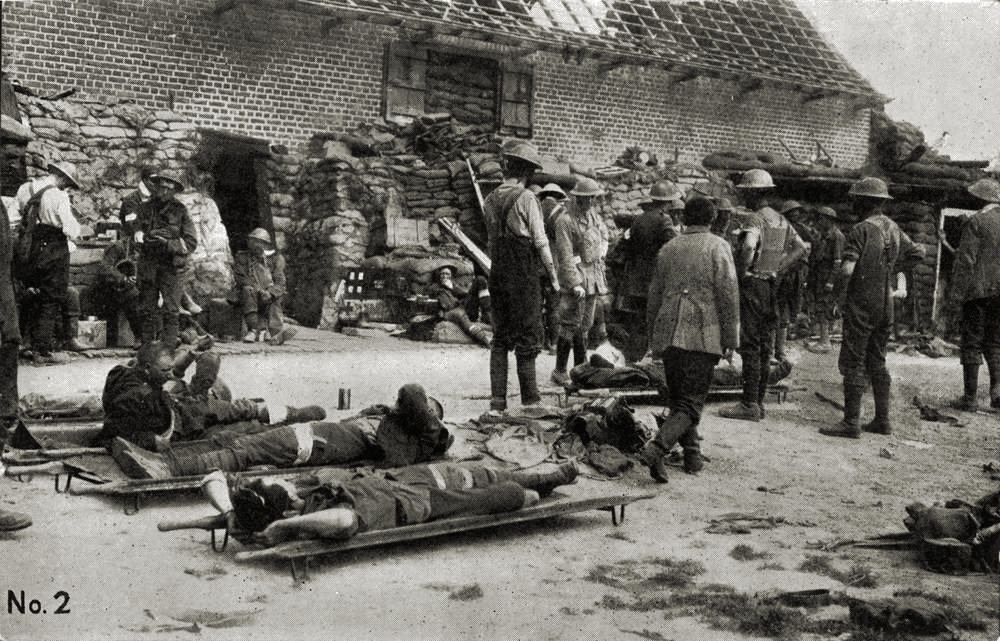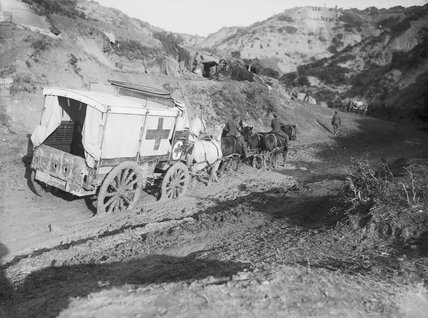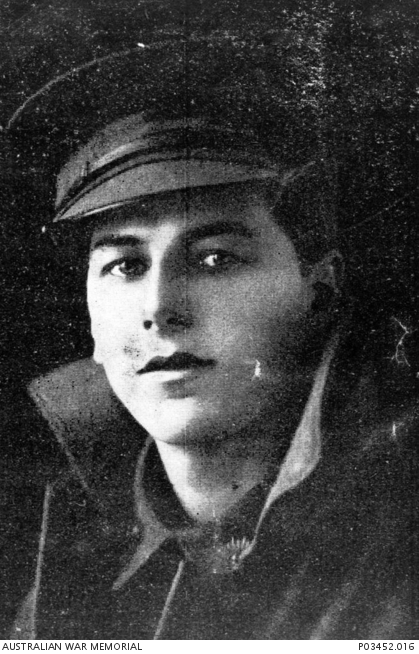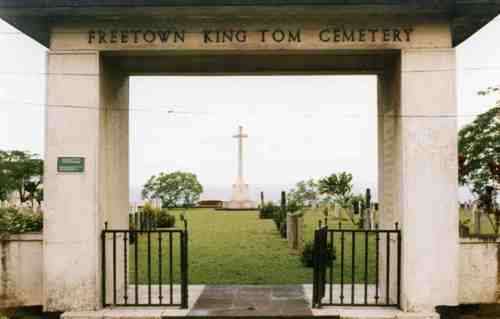One of the four grandsons of William Groom (first MHR for Darling Downs) and nephews of Littleton Groom (MHR and assistant to the Minister for Defence) to die in the Great War, was Edward William Beverley Marlay. (See also L.C. Groom.)
Edward was almost 19 years old and a bank clerk, living at Chinchilla, when he enlisted at Toowoomba on 30 November 1915. He came from Toowoomba and was educated at the Toowoomba Grammar School. He had lived with his parents in Arthur Street, and took his first job at the Australian Bank of Commerce in Toowoomba, before his transfer to Chinchilla. Edward listed his father Arthur Beverley Marlay as his NOK. His mother, Nellie Maud, was the daughter of William Groom. He was 5’5” tall and weighed 120 pounds. He had a sallow complexion, bluish eyes and brown hair, and was of the Church of England religion.
Edward trained at Enoggera and was posted briefly to the 42nd Battalion before his transfer to the field ambulance of the Army Medical Corps (AAMC). He sailed from Brisbane aboard the A49 Seang Choon on 19 September 1916. In early 1917 he was still part of the AAMC reinforcements until his posting to 1st Field Ambulance on 10 January. Within a short time of reaching the front-line units Edward was involved in the fighting before the Hindenburg Line that began with the German withdrawal in late February. The British army followed the German retreat until an offensive against the new German positions was launched in April 1917.
The AIF made two costly attacks at Bullecourt against almost impenetrable German defences. The battles are referred to as First and Second Bullecourt, in April and May. In the second of these on 5 May Edward was wounded in action. His wounds were described as “GSW, wounds chest & left hand”. He was evacuated to England, where he was treated at the Royal Herbert Hospital at Woolwich. His condition was serious and after he was assessed by a medical board it was decided to return him to Australia.
The records of soldiers who returned as patients under medical care are far more detailed than those of soldiers who died in or near the front line. Clinical records accompanied the men back to Australia and have since found their way into the archives. In Edward Marlay’s case we know that a shrapnel piece entered his back at the left shoulder blade and exited his chest, damaging his arm as it did so. Injuries that might lead to permanent disability or long term recovery (over six months) led to repatriation to Australia. Edward embarked on hospital-troopship A24 Benalla on 25 August 1917. When the ship reached Sierra Leone on the west coast of Africa, Edward was taken ashore suffering acute appendicitis. He had surgery at Tower Hill Military Hospital, but died on 20 September from severe gangrene after a second operation. He was later buried at the Kissy Road Cemetery. The cemetery was not controlled by military authorities and is known in post-colonial Sierra Leone as the Freetown (King Tom) Cemetery. Today there is a memorial there to Allied servicemen who died in the world wars in Sierra Leone. Edward was still several months short of his twenty-first birthday when he died.
Edward had a brother Kenneth, and a cousin Bruce, on the Marlay side, who served in the AIF. Though both were wounded, they returned to Australia. Arthur Marlay, still very proud of his son’s sacrifice in the war, wrote to the historian in the late 1920s that Edward “came from fighting stock”. He had two great grandfathers, Major Marlay and Captain Perry, who fought at Waterloo, a grandfather who served in the Royal Navy, as well as the three cousins from the Groom family, who lost their lives in the Great War. He is also commemorated in the Warriors’ Chapel of St. Luke’s Anglican Church in Toowoomba.
Toowoomba Grammar School Archive Records state that he started school on 31st January 1911 and left on 1st June 1912. The School Magazine of November 1917 states, ‘MARLAY, EDWARD W. BEVERLEY-Son of Mr. and Mrs.A. B. Marlay, of Toowoomba–At School 1912-13. Belongedto First Field Ambulance Brigade. Wounded and invalided home, but died at sea September 20th. Age 20.
External Links:
Australian National Archives Military Records
Australian War Memorial Honour Roll
AWM4 AIF unit war diaries 26/44/26 1St Field Ambulance May 1917

Battle of Messines Anzac Field Dressing Station June 1917 – courtesy of Queensland State Library

Rapid Transit Galloping Ambulance invented by Old Boy Major Leonard Avery DSO




